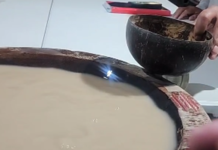Campaigners for the Niuafo’ouan language want it to be part of the Tongan curriculum.

They are accusing the Ministry of Education of destroying the language because of its failure to teach it in schools.
They are also accusing modern Niuafo’ouans of being embarrassed to speak the language.
The promoters have called on the Prime Minister Hu’akavameiliku Siaosi Sovaleni to allow the language in the curriculum.
They were optimistic about their chances, saying Hu’akavameiliku was Niuafo’ouan through his mother’s side.
The language of Niuafo’ou, which is regarded as one of the most isolated islands in the world, is dying out, with fewer than a thousand speakers.

Tongan Prime Minister Hu’akavameiliku Siaosi Sovaleni.
Located in the north of the kingdom, it is the furthest island from the mainland, Tongatapu.
Hawai’ian anthropologist Thomas S. Dye, who visited the island in 1970s to research the language, said it could only be understood by Tongans if spoken slowly.
Dye said there was pressure from the Tongan government at that time to teach the Niuafo’ouan children to speak Tongan at school and disregard their own mother tongue.
Speaking of the language is identified with the Tongan words kote or kotekote or kote faka-Niua.
It was described as being the same as speaking a foreign language in a way that was fast with an exotic vocal variation which most Tongan speakers found out of the ordinary. The situation led to the language being stigmatised as a laughing stock.
Dr Akihisa Tsukamoto, who was in Niuafo’ou in the 1980s and researched the language, wrote some Niuafo’ouan sentences in his dissertation and translated them into English as follows:
Niuafo’ouan: Kuo te tamai ‘ia Sione
Tongan: Ko e tamai ‘a Sione
English: Sione is a father.
Niuafo’ouan: Kua tamai ‘ia Sione he kua fā’ele tono mali
Tongan: Ko e tamai ‘a Sione he kuo fā’ele hono mali’
English: Sione is a father because his wife has had a baby.
Tsukamoto said the Niuafo’ouan language closely resembled ‘Uvean and Tongan.
He said they had a very similar grammar and shared much vocabulary.
“There are mutually intelligible with one another to a considerable extent unless spoken very fast,” he said.
Mākisi Fīnau, a former senior government officer in Tonga told PMN Tonga that he assisted and accompanied Tsukamoto while he did his research in Niuafo’ou.
He said Tsukamoto did a great job to preserve the language.
Mākisi said the Niuafo’ou language was “beautiful,” but it was “hugely destroyed by the Ministry of Education”.
He said he once raised it in Parliament while working there, with the Late Hu’akavameiliku Senior, the father of Prime Minister Hu’akavameiliku, who was the Minister of Education at the time.
“I told Hu’akavameiliku his Ministry of Education badly damaged the Niuafo’ouan language,” Mākisi said.
He said he told Hu’akavameiliku Snr that his teachers taught spelling to the children in Tongans while the children responded in the Niuafo’ouan language.
Mākisi gave an example:
The teacher asked the children to spell the pronoun kimoua in Tongan, but the children responded with the Niuafo’ouan equivalent of the word, which is kolua.
Mākisi implied that the children in this way were forced by the teachers to learn Tongan, according to the syllabus and disregard the Niuafo’ouan language.
Mākisi said Niuafo’ouans these days were ashamed to speak the language and this had contributed largely to the shrinking number of speakers
Makisi’s co-guest on PMN Tonga, Feletiliki Fīnau, agreed and said it was about time for the government to include the Niuafo’ouan language in the curriculum.
“I wish the Prime Minister could hear us. His mother was a Niuafo’ouan”, Feletiliki said.
He said if the language could not be included in the syllabus there was no way that it could be preserved.
He also said they were campaigning in New Zealand to preserve the language and have their radio programme broadcast in Niuafo’ouan.
There have been academic moves to teach the language. In 2019 the University of the South Pacific’s (USP) Tonga Campus and Institute of Education launched a Bachelor of Arts programme in Pacific Vernacular language in Tongan and Niuafo’ouan.







